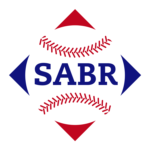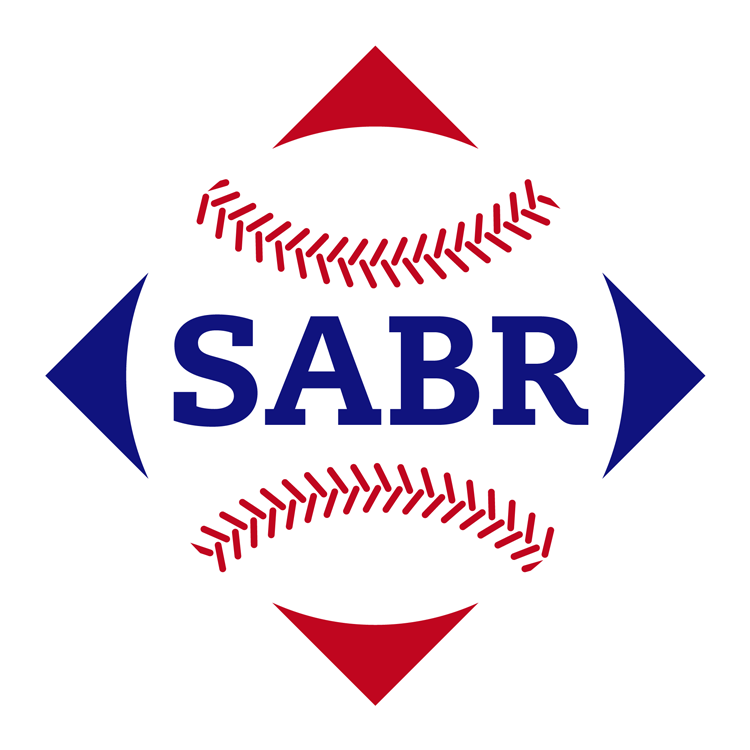A Reunion of Sorts
Last winter I was at my brother-in-law’s house for a Sunday of football when he mentioned that during a recent cleanup, he stumbled upon something that belonged to me and that I had loaned to him many moons ago. He handed me a blue pocket folder that held the 16 colorful team charts from the Sports Illustrated All-Time All-Star (“ATAS”) baseball game that I had purchased in 1972 (produced by Time, Inc.). Accompanying the charts was the rules folder with various strategy charts. Long gone was the blue plastic field by which players could track baserunners, the inning, number of outs and game score, as well as the classic game box that featured a black and white photo of Babe Ruth in post-swing pose.

I had assumed that all traces of my ATAS game had long since disappeared. Being handed those charts was like receiving a visit from a long lost dear friend!
A Whole New Gaming Experience
I began my baseball replaying days with Cadaco’s All-Star Baseball. Many old-timers probably remember that game with the round player cards that were slipped into a clear plastic pocket with a spinner on top, set against a backdrop of a photo of a packed Wrigley Field. All results were determined solely by where the spinner stopped on the hitter’s card, regardless of whether the opposing pitcher was Tom Seaver or Al Santorini. There was no element of fielding, and tactics such as stealing and bunting were handled generically. But the game occupied me for hours and I became quite certain that Carl Morton was perhaps the best pitcher in baseball because he compiled a W-L record of something like 21-3.
In the summer of 1972, a friend introduced me to Sports Illustrated Baseball with team charts based on the 1971 season. I was hooked! A game in which pitching and fielding mattered, batters were impacted by whether the pitcher was a lefty or righty, and individualized bunting, stealing and baserunning skills were incorporated. As a bonus, the predominantly red and green charts (also containing blue, white, and yellow) were not only pleasing to the eye, but they were flat out inviting. I saved my lawn mowing and leaf raking money and headed to Merit’s Department Store to buy SI Baseball. The regular season game my friend owned was not on the shelf, but ATAS was, and I was not going to leave that store without an SI game under my arm. So, I “settled” for ATAS and soon learned that my second choice was the true prize!
The ATAS Team Charts and Basic Game Play
ATAS includes a team chart for each of the 16 original franchises, and each team is comprised of the best 25 players (16 position players; 9 pitchers) in its history through 1971, including a sprinkling of some players whose glory days were in the 1890s. A total of 400 players are included as no player was placed on multiple teams. The front of a chart lists the 16 position players, their defensive positions and ratings, stealing/baserunning and bunting ratings, and separate hitting charts for facing a lefty or righty pitcher.

Listed on the back are the pitchers, their pitching charts, and all the same information as position players, with the exception that pitcher batting results are not impacted by the handedness of the opposing hurler. Also on the back is a brief yet entertaining analysis of the team. Occasionally a blank will appear instead of a particular player’s name because permission was not received to use the player’s name, but as they are listed in alphabetical order and the position(s) are listed, it is quite easy to determine the player’s identity. Although no description of player creation was included, the charts appear to be based on a series of a player’s best seasons rather than his entire career. Sandy Koufax is proof of that conclusion. He is much too dominant for the pedestrian seasons of his career to have been considered. Likewise, the charts appear to be based on raw statistics without any normalizing based on era as with only few exceptions the Deadball Era pitchers are the most dominant. As the last 50+ seasons are not represented, very few traditional relief pitchers are included. Some pitchers are rated separately for starting and relieving.

As expected, roster construction can vary significantly from team to team. For example, franchises with long histories of success such as the Yankees, Giants and Cardinals have players from a broad selection of eras. By contrast, the Browns/Orioles are liberally represented by players from the early and mid-1920’s, and from 1969-1971, and the Senators/Twins are significantly made up of players from the 1920’s, early 1930’s and the 1960’s.
Results are generated by rolling 3 wooden dice. Their feel and sound are so pleasing! Results span 10-19 (16.7%), 20-29 (33.3%) and 30-39 (50%). Not all results within any group of ten are created equal, however. For example, the chances of rolling a 39 are 1 in 72, while the chances of rolling a 35 are only 1 in 12 (the rarest roll is a 19; 1 in 216).
The game play is very smooth. The dice are rolled to obtain a result on the pitcher chart, which can be a certain type of automatic out, a walk, a reference to the team’s defensive rating that may result in an out, a reference to the “X” chart (PB, WP, HBP or injury), or allows the batter to swing. (On charts based on regular seasons, less talented pitchers can also surrender an automatic single, but none of those in ATAS.) If the result is batter swings, the dice are re-rolled under the batter’s hitting chart. If there are any runners on base, a wide variety of play results may require an additional dice roll under the manager’s decision chart to determine base advancement. Separate charts are also included for stealing, sacrifice bunts, and squeeze plays.
Although ATAS has several limitations, particularly compared to the depth of computer games such as Diamond Mind Baseball and Action! PC Baseball, it plays a credible game of baseball in about 20 minutes and produces realistic results.
ATAS Memories
By age 11 I was aware of and had read about several of the top players in history, but ATAS opened my eyes to many whom I did not know of. The game sent me scurrying to find out as much as I could about those “new names,” making ATAS a true baseball education for me. To this day, when sharing information about a current replay (right now it’s 1922) one of the guys in the email replay group, who also played ATAS in his youth, will mention that he “first met” a particular player in ATAS!
One of the aspects of ATAS that captured me right away was the uncertainty of how a season or tournament would turn out. When playing a regular season, it’s much more certain which teams will contend, and which will not. Although there are definite strengths and weaknesses among the teams in ATAS, almost every team, especially in the National League, has the chance to rise above all the rest. The Yankees, with their seemingly endless supply of home run hitters, are the class of the AL, but the Red Sox, Indians and Athletics are all capable of providing stout competition. The Tigers have a shot if their bats stay hot, while the Senators/Twins, Browns/Orioles and White Sox face stiffer odds. The Giants and Cardinals are the best of the Senior Circuit, closely followed by the Cubs, Dodgers and Pirates, with the Reds, Braves and Phillies having the toughest road, but are still better overall than the weaker AL clubs.
I never played a full season with ATAS – too many other things to do as an 11-14-year old – but I did play some short seasons and several tournaments. Cumulative rudimentary stats (HR, RBI, SB and W-L-S) were kept tally style in a spiral notebook, along with the results of each season and tourney. Sadly, that spiral notebook went the way of others’ prized baseball card collections during some long ago spring cleanup project. And ATAS sparked a love of hybrid, best players “replays.” Twice I played a full season with APBA’s first Original Franchise All-Stars set, once with the 1950’s Decade set, and once with a homemade 1980s Decade set. I have also played three full seasons with Diamond Mind’s All-Time Greatest Players collection.
I am a lifelong Red Sox fan, and in 1975 the gruff police sergeant down the street delighted in razzing me about Boston’s World Series loss that year to the Reds. Perhaps my fondest memory of ATAS was when I challenged him to our own Cincy/Boston World Series using the ATAS charts, and my Red Sox swept his Reds in 4 games, one of which was a no-hitter (though memory of the author of that feat has been lost to time). There also are countless memories of sitting on my dining room floor playing ATAS, with the aroma of dinner being prepared wafting in the air as syndicated re-runs of Star Trek, I Love Lucy and Petticoat Junction scrolled by on the television in the living room to my right.
When the game charts found their way back to me earlier this year, I scoured my dice collection and was delighted to find two sets of original SI wooden dice. I promptly sat down to a game between the Dodgers and the Giants, and Christy Mathewson outdueled Sandy Koufax 1-0. The game’s lone run scored courtesy of a Willie Mays triple and Orlando Cepeda RBI ground out. I had a blast, and it might as well have been 1973 all over again!
ATAS Today
Given the indelible and sentimental impact ATAS has left on me, it is hard to believe that I played the game for only a little more than 3 years before moving on to APBA. For the serious replayer of today, ATAS would likely not fill the bill as it has its distinct limitations compared to advances made in other card and dice baseball games, and particularly when comparing it to games that take advantage of the power of the computer. For instance, there is no pitcher fatigue, defense is based solely on a team rating (sum of individual ratings) and except for catcher arms individual defensive skills do not impact any play, balls in play (hits, errors, ground outs and fly outs) occur generically and are not hit to any particular fielder, and there are no ballpark or weather effects. Regardless, the player mix was novel for its time, and the game design effectively captures the players’ abilities on the mound, at bat and on the bases according to both legend and their statistical profiles in The Baseball Encyclopedia. Best of all, the nostalgia of the game makes it perfect for an occasional diversion when I once again long to roll the dice, or as a great way to spend some time with an old friend who shares the love of baseball and simulation games.
I have been a baseball replayer since 1969, beginning with Cadaco's All-Star Baseball. I left behind cards and dice baseball in 1994, and have played Diamond Mind Baseball since 2004. I also enjoy football replays with Second and Ten, and I like reading and running.
- This author does not have any more posts.



Your memories of this game and how it introduced you to so many all time early century players with names you didn’t know before are the exact same memories I have of this game. There were a couple of summers in Junior High where two of my buddies and I played many games. Names like Lajoie, Gehringer, Maranville, Chesbro, Chief Bender, and so many more were introduced to me for the first time and I looked them up. Was recently reminded of this experience reading Joe Posnanski’s book, Baseball’s 100.
This entire commentary was a mirror of my experience purchasing and playing the game as a kid!! Thanks for the very pleasant replay of a cherished memory!
Is there anyone selling the team sheets? I only have 8 and would like a complete set.
Frank J
Check out what Bob Biscontini is selling on eBay…he has rights to the All-Time All-Star formulas and has beautiful charts, game board and SI dice, with a few upgrades to the features of the game (but you can play by the original rules)
Upon inspection of that misprinted chart, that shows both the A’s and Phillies at the top where the team is displayed, and it is INDEED the ATAS Phillies (the A’s have their own chart). Since both teams originated in Philly and drinking was more acceptable in the 70’s, we’ll give Sports Illustrated a pass on this boo-boo. I played this game in my late teens so much i wore out a few of the charts (not to mention losing one of the 3 dice was almost like a death sentence)!
Nice piece you wrote here, cheers!
Anyone know where I can get (for free) the original 6-page rules for the original SI ATAS game?
Interested in purchasing one of these games my dad and I play apba baseball and he remembers this game as a kid is there any way you could Lead Me to a way to purchase it
We played that game in the 70s so much we wore the pages out, had the dice rolls memorized for a lot of the players and my poor parents having to listen to the dice rolls for hours. Fortunately they were wooded dice back then not plastic so not as loud. What a great game!!